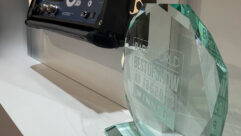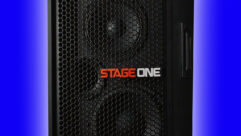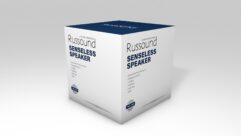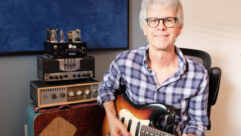The best of both worlds
Jan 1, 1999 12:00 PM,
Timothy Thornton
Tens of thousands of religious organizations in this country own andoperate sound systems. Among other factors, the size of each church,synagogue or mosque and the specific style of worship determine the degreeof dependence upon sound reinforcement. The Second Baptist Church, Houston,led by Pastor Dr. Ed Young, has its own challenges and complexities thatexceed ordinary church sound reinforcement. In fact, the tasks of its audiodepartment more closely resemble those of a multi-disciplinary A-Voperation in a sizeable rental company rather than those of a church,especially considering that the church maintains a separate, on-sitebroadcast production studio to record and televise services and specialevents.
The primary factors shaping the actual installation are significant. Themain worship center, which seats 6,500, has an interior volume roughlyequivalent to a professional sports arena. Consequently, the church usesmore than 120 loudspeakers in nine different models. The amps produce morethan 80,000 W of power and require a 300 ampere service.
To make matters worse, the church’s acoustical properties are unusuallyreverberant and especially challenging because of a large, conicalstained-glass ceiling over the stage. The focal point of the cone hangsdirectly over the pulpit. Standing at the pulpit, a light handclap producesseven discrete yet completely audible echoes, even with no mics. Two809x609 (24 m x 18 m) acoustically reflective stained glass windows add yetanother level of problems.
In addition, the music ministry, a vital element of the church’s service tothe community, regularly stages major theatrical and musical productions.Equal to Broadway musicals in scope, content and demand on audio, video andlighting, these productions meant that the new sound system’sinfrastructure had to provide far more than speech intelligibility.
For aesthetic reasons, the church administration decided that the primaryloudspeaker cluster would be housed in a decorative gondola suspended 55feet (17 m) above the stage and 25 feet (7.6 m) below the ceiling and wasoriginally designed to hold the earlier system’s horns and bins. A 13 ton(900 kg), 65 foot (20 m) scaffolding tower was erected on the multi-levelstage surface to provide access to the gondola. The structure’sconstruction required 28 men working for 10 hours.
When it came time to install the new system, the disruption of even asingle Sunday service was not permitted. All work had to be coordinated tokeep the previous system functional until the new one could take over.Consequently, we had to squeeze approximately $1 million of equipment andlabor into the available time slot-from the final Sunday evening servicewith the old system to the following Sunday morning using the new. I hadrecently been appointed chief engineer at the church when the new systemreceived the green light. The installation contract went to AudioCommunications, Houston, a prominent contractor who had installed theoriginal system 12 years earlier.
The system design uses a predominantly single-source concept to provide therequired imaging to the stage, but it is also buttressed by a plethora ofsupport loudspeakers. As the primary operator, I had the best possible setof tools. Over the weeks following the initial installation, I tweaked andtuned the system’s many zones, extracting every bit of gain-before-feedbackwithout sacrificing tonal quality. The combination of the strong centralloudspeaker cluster supported by the many delay loudspeakers allowed me toachieve perfect intelligibility along with a local presence in each seatingarea. The complex system avoids undue excitation of the extremelyreverberant room without damaging the audible imaging to the stage.
System detailsThe heart of the system is the Apogee 3×3 tri-amplified, horn-loadedconcert loudspeaker. A cluster of five 3x3s installed in the gondolaprovided coverage from the middle of the seats on the main floor to themiddle of the first balcony. Luckily, the 3x3s fit in the gondola withbarely an inch to spare. A second cluster of seven Apogee AE-9s, also fullyhorn loaded, were mounted below the 3x3s. These were critically focused toprovide coverage from the third row of the main floor rearward to thebeginning of the 3x3s’ coverage pattern. Precisely focusing theseloudspeakers was a key element that allowed maximum gain before feedback inthe front of the stage, which, in turn, enables the pastor to leave thepulpit and walk among the congregation.
Five wide-angle AE-2 loudspeakers were installed along the front of thestage, providing coverage in the first three seating rows. This zone ofloudspeakers can be attenuated independently of the main system,eliminating problems that might occur when the pastor walks into theircoverage area. The AE-2, a special-purpose, wide-angle (160 degrees)loudspeaker normally used for under-balcony fill, fit the coverage patternneeded in this zone.
The under-balcony area of the main floor is covered with 18 more AE-2s.Their usage here provides additional acoustical energy in the back of theroom, evening out the differential in SPL from the front to the rear of theroom. The AE-2s also serve to provide the less tangible effect of adding alocal presence in the highly reverberant environment. Both the middle andupper balconies are likewise covered by 18 AE-2s, further serving to smooththe front/rear level variances, while maximizing intelligibility.
Although well situated in the pattern of the main 3×3 cluster firing fromthe gondola, the rear third of the main floor is augmented with four smallarrays of AE-5 loudspeakers. Each array, mounted on one of four existingsupport pillars, provides the sound engineer with another tool to controllevels and tonal quality in this zone independently of other areas. Thissection of the house is said to possess the best audio quality, but itwould otherwise be one of the weaker spots because of its distance from themain cluster.
The extreme left and right fringe areas of seats are also covered by AE-5units mounted into the wall surfaces that form the edge of the stairsleading to the choir loft, which houses 300 vocalists. These loudspeakersprovide level and intelligibility in areas out of the main cluster’s directradiation pattern.
Finally, four AE-12s, a dual 18 inch (457 mm) subwoofer, round out theloudspeaker compliment. Two of each are placed on either side of the stageand bolted to the floor. They provide bass for track playback andreinforcement of the orchestra. The AE-12s are fed through a delay line tobring them into acoustic alignment with the primary central cluster, whichis about 30 ms to 40 ms behind the subwoofers because of physicalpositioning.
By using a dominant central-source system with multiple delayed supportzones, it was possible to achieve a uniform balance throughout the room.This would have been unobtainable with a single-source only approach. Thesystem design retains strong stage imaging, however, which would have beenimpossible with a fully distributed system. The application of two designphilosophies resulted in a system that exploits the best of both worlds.
AmplificationAll power amps used in the system are Apogee’s DA-800s. The DA amps have anon-board microprocessor that provides front-panel indication of loadimpedance, AC line voltage, output voltage, output wattage and channeltemperature. Attenuation is set by a shaft encoder in increments of 0.5 dB.Considering the system’s complexity, the DA-800 was useful in setting upand establishing proper baseline performance parameters. In a church, youget a performance opportunity only one day a week. Any tool that minimizesthe time it takes to tweak the system is extremely valuable.
Future plans include updating the amps to incorporate Apogee’s AmpNETsystem. AmpNET provide a means of monitoring and controlling the amps froma remote PC. Any amp that might exhibit a problem will be identified by thecomputer. Adjustments to the 41 amps can be made without sending atechnician, and comprehensive logs of amp conditions are recorded and canbe printed at will.
Processing and alignmentEach zone received its own delay time and parametric EQ. Five Klark TeknikDN-728 digital delays and 20 Apogee CRQ-12 parametric EQs were the mainalignment tools. All time delay settings and EQ curves were derived byusing Apogee’s CORREQT measurement system (computer optimized room resonantequalization technique). CORREQT measured delay offsets to within fractionsof a millisecond, and corrective EQ curves were precise. In essence,CORREQT lets the system reproduce a musical full-range response withoutunduly exciting the room resonance modes that would have made music muddyand speech unintelligible. The CORREQT process also allows recon-figurationof the system delay times and EQ curves to accommodate the large specialevents held in the church throughout the year. Often, these events requirerelocation of the front- and side-fill loudspeakers, and EQ and delaysettings need to be altered appropriately.
Ken DeLoria, inventor of CORREQT, said, “Only undesirable room resonance isremoved, not the broadband or arbitrary-band cuts that one is forced tosettle for when using 1/3-octave analysis and graphic EQs.”
During the refurbishment of the main system, much of the FOH equipment wasupgraded or supplemented. This included a 40 input AMEK Total Recallconsole, a 32 input Mackie console used to sub mix choir mics, a 192-pointhand-wired patchbay and a Marantz CD recorder along with multiple DAT andminidisc machines. The mics include Neumann KM-184s and KM-84s, AudioTechnica 4033s, AKG 414s and 460s, Sennheiser 421s, 441s and MKE-40s, and aSchoeps podium mic.
An Apogee CRQ-12 was used for EQ and feedback suppression of the podium andthe pastor’s wireless lavalier mic. Two channels of Dolby CAT 430frequency-selective noise gates were also added to eliminate the reverbtail generated from the PA getting back into the open mics. Althoughexpensive and offering only subtle change, the improvement from the Dolbyunit and the carefully adjusted parametric EQ provided an extra measure ofcontrol upon which we regularly relied. We worked under adverse acousticalconditions, and every decibel that we could squeak out of the system wouldmake an important difference.
The importance of letting the pastor focus fully on his message to thecongregation without distractions from the sound system cannot beoveremphasized. Unlike entertainment requirements, a gathering forreligious purposes cannot let sound take a back seat to lighting, video,staging or any other element. Otherwise, the purpose of the assembly couldbe lost with the possibility of more harm than good.
Installation notesThe task of installation was formidable, and Audio Communications handledthe job with the skill that comes from only a veteran organization. Thesystem required more than 7 miles (11 km) of wire, much of which was plenumcable. Wire paths were difficult to find, requiring the installers to spendmany hours in the attic in 125 degreesF (52 degreesC) heat without airconditioning.
Brackets for the pillar loudspeakers were custom fabricated by a local shopand welded to the pillar support columns. This became possible afterextensive excavation into the plaster facade of the columns, which demandedextensive artistic refurbishment following the welding.
Foremost among the installation challenges was the task of placing the2,320 pounds (1,044 kg) of loudspeakers into the gondola, 55 feet (17 m)above the stage. When completed, there was barely room enough for a man toenter the access door at the top of the structure. After the scaffoldingwas removed, access to the gondola was possible only by rappelling downfrom the ceiling. Fortunately, panels of the stained glass ceiling areremovable, making for a straight shot.
Additional improvementsLast year, the decision was made to decrease the size of the choir loft toaccommodate two Barco video projectors illuminating two large screens. Theoriginal pews in the choir loft were removed and with them went the 280loudspeakers that served as choir monitors. The pews were replaced withmodern seating, allowing no room to reinstall the monitors. This problemwas solved by three Apogee C-3 concert loudspeakers in the gondola thatpointed rearward into the choir loft. The C-3 is identical to the larger3x3 with only one sub and one low-frequency horn (where the 3×3 has twosub/low-frequency horn combinations), thereby reducing the height from 45feet (14 m) to 30 feet (9 m). The addition of the C-3s delighted the choirmembers, who were never really satisfied by the monitor loudspeakersanyway. Its members say they experience the service, especially thepastor’s message, as if they had seats in front with the rest of thecongregation.
Reconstructing the 13 ton (11,700 kg) scaffolding to add the C-3s to thegondola was deemed too large to consider. The first effort took 20 men morethan 12 hours to erect the structure and about the same to remove it. Thecost was staggering, yet the work needed to be done. After considerablebrainstorming, it was decided to rent a large platform like the type usedby spot-operators in arena concerts. The platform was rigged to thestructural steel above the stained glass ceiling and flown with chainmotors. This way, the crew could ride the platform up and down to thegondola, greatly simplifying the installation.
While installing the three new C-3s, adjustments were also made to the main3x3 system. Replacing the outer two 3x3s with C-3s allowed a sharperdownward loudspeaker focus, which yielded better results in the seats inthe coverage area. The larger 3x3s were limited by their size and could notbe tilted far enough downward because of the physical constraints of thegondola structure.
Stage monitoringSecond Baptist Church uses a sizeable orchestra as part of its worshipservice. Instruments typically include piano, percussion, strings, brass,guitar, keyboards, woodwinds and a large Allen pipe organ whose primaryranks are at the rear of the choir loft, making bleed into the choir micsinevitable. Many Sundays, a guest artist, usually a nationally knowncontemporary Christian performer, performs during the service. Most often,the artist will return in the evening for a full-blown concert followingthe evening service.
Monitoring is a critical function, especially when the pipe organ isplaying mezzo forte or louder. Floor monitors added to the system includethree Apogee AE-6 biamped multi-angle wedge types and 11 Apogee SSMs. TheSSM is a small, high-fidelity enclosure that mounts conveniently on a micstand. They are used on the platform for the church elders, which includethe pastor, the music minister and the assistant pastors, all of whom arecontent with the loudspeaker’s small size and natural, unstrainedreproduction. Other stage monitors include EVI Audio and Community unitsused throughout the orchestra areas.
The stage monitors are mixed from the house, and the most critical inputs,such as the pastor’s mic and podium mic, are split into two channels. Thisallows the console’s channel EQ to be varied independently in the house andmonitor sends. Additionally, the pastor’s lavalier and the primary podiummic each use one-half of an Apogee CRQ-12 as an insert device. The CRQ-12offers six bands of fully parametric band-pass filters, a 12 dB/octave LPand HP filter with adjustable turnover frequency, and low- andhigh-shelving filters with adjustable corner frequencies and boost and cut.I cannot overemphasize the importance of precision EQ to the success ofthis installation.
SummaryPerhaps the best way to summarize the success of the thousands of hoursdevoted to the sound at Second Baptist would be a quote from the pastor,Dr. Young, who said, “The need for the proclaimed word to be reproducedwith absolute clarity is essential. We have been thoroughly pleased withthe pristine sound and positive service provided by our new system.”










